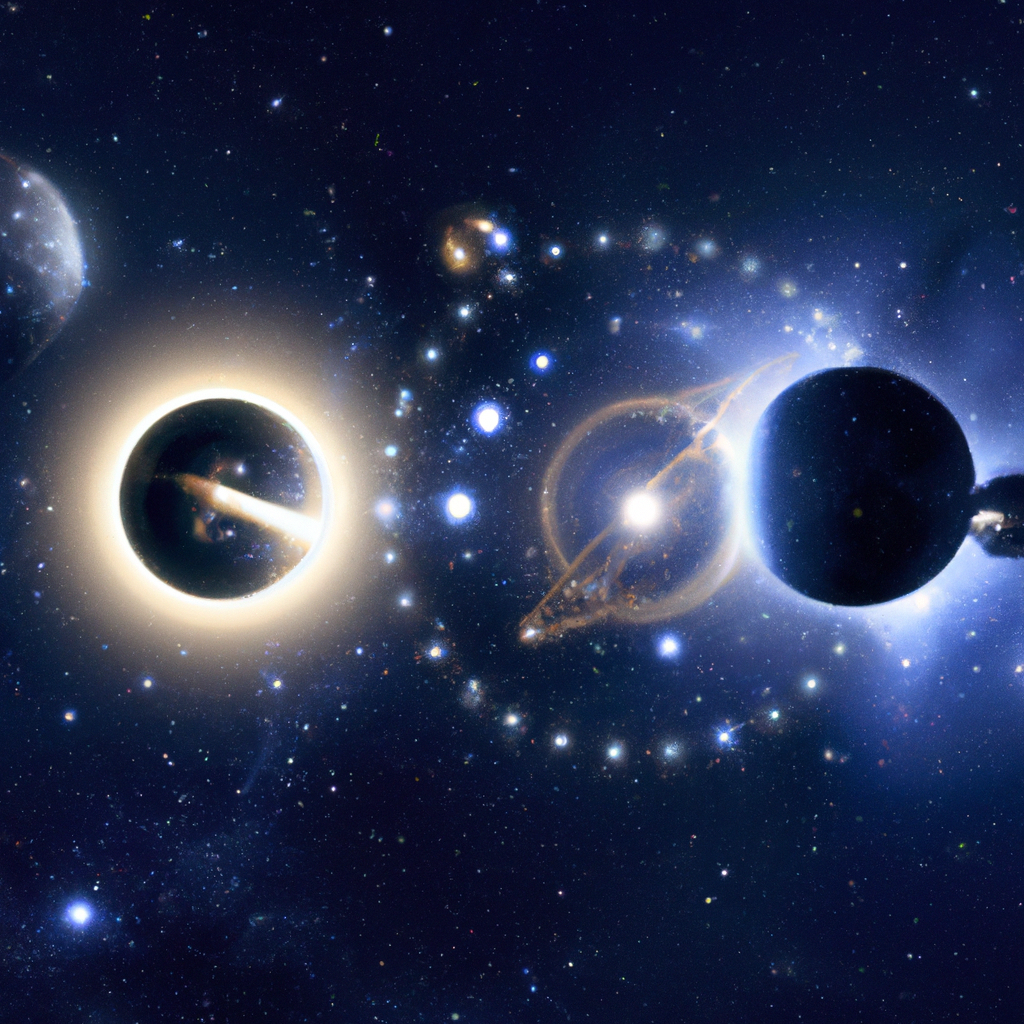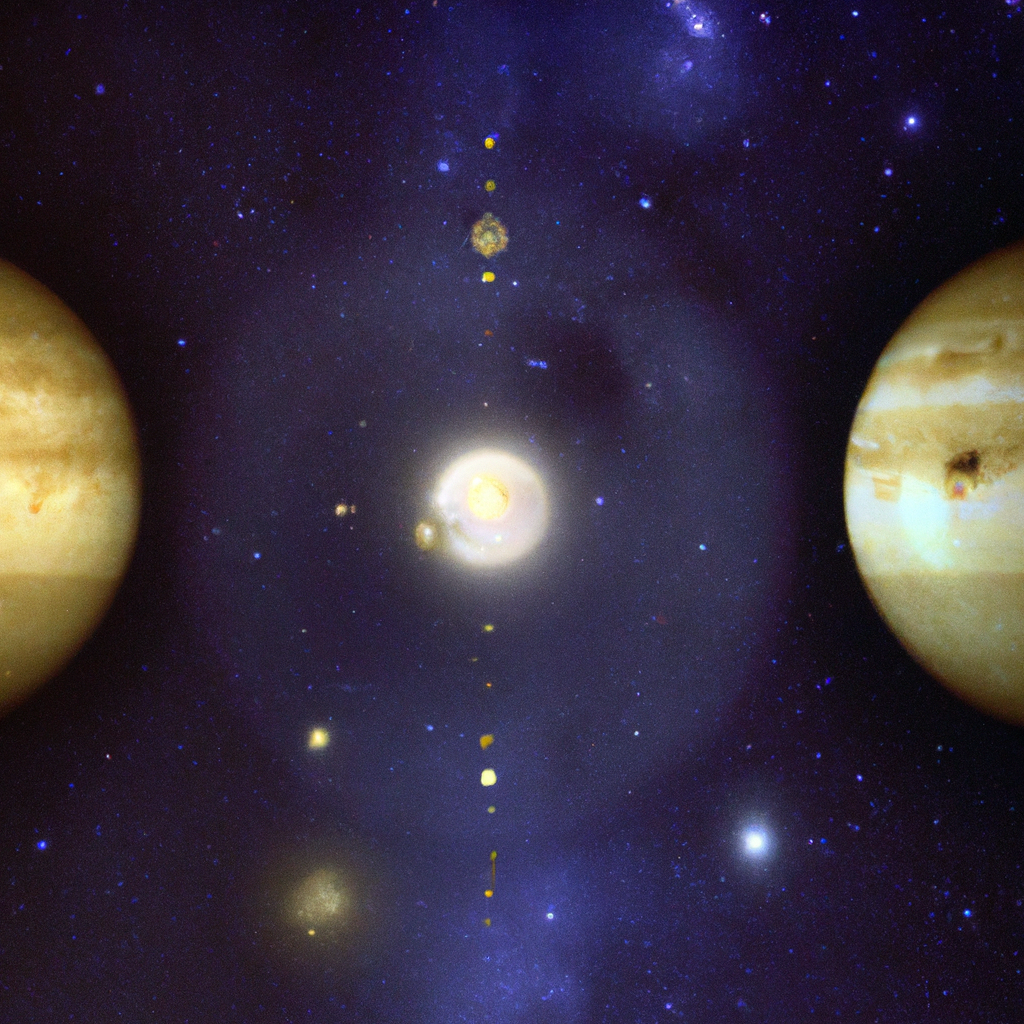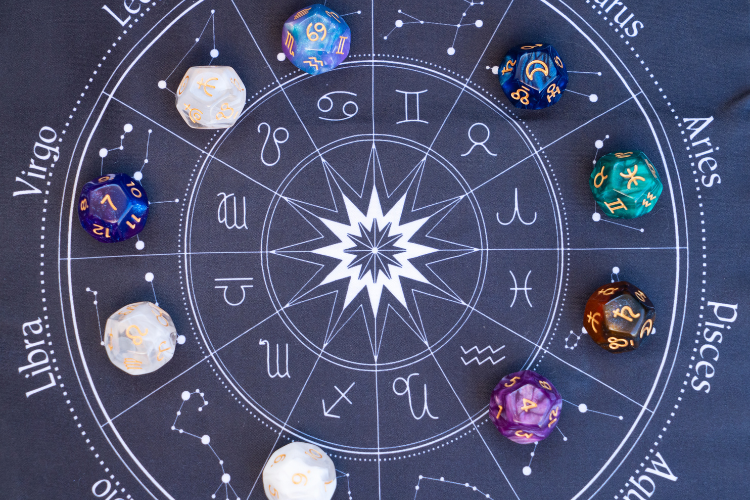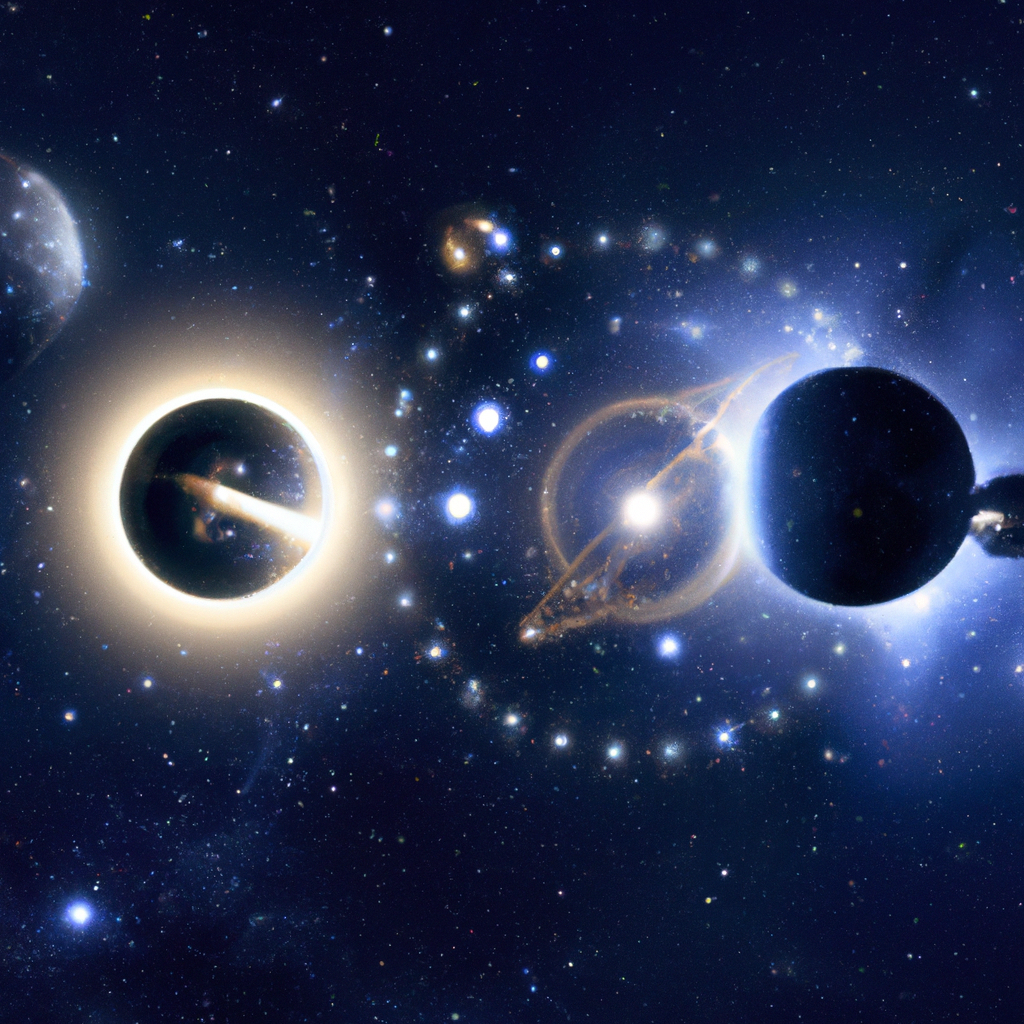Astrology has always fascinated you, hasn’t it? Well, get ready to dive deeper into this ancient art as we explore the intriguing role of Conjunctions in astrology. We all know that planets in the night sky have a major influence on our lives, but did you ever stop to consider how their interactions with each other play a vital role in shaping our destinies? In astrology, a conjunction occurs when two planets align in the same zodiac sign, creating a unique and powerful energy that can significantly impact various aspects of our lives. So, let’s embark on this cosmic journey and unravel the mysteries of conjunctions in astrology.

Understanding the Role of Conjunctions in Astrology
Astrology enthusiasts often turn to conjunctions to gain deeper insights into various aspects of their lives. Conjunctions in astrology play a significant role in shaping our personalities, relationships, and even world events. In this article, we will explore the definition, types, and significance of conjunctions, along with their interpretations in natal charts, transit astrology, relationship compatibility, mundane astrology, and unique celestial alignments.
1. Introduction to Conjunctions in Astrology
1.1 Definition of a Conjunction
In astrology, a conjunction occurs when two or more planets align closely with each other in the same zodiac sign. This alignment creates a powerful fusion of energies that can greatly influence an individual’s life. Conjunctions are considered potent aspects as they amplify the characteristics of the involved planets, both positively and negatively.
1.2 Importance of Conjunctions in Astrology
Conjunctions hold immense importance in astrology as they provide valuable insights into various aspects of life. They help astrologers understand how different planetary energies interact with each other and how they impact individual traits, relationships, and even global events. By studying conjunctions, astrologers can unlock a deeper understanding of one’s personality, potential challenges, and opportunities for growth.
2. Types of Conjunctions
2.1 Major Conjunctions
Major conjunctions occur when planets align in the same sign and are within a few degrees of each other. These conjunctions have a profound impact on an individual’s life and are often seen as significant turning points or milestones. Major conjunctions include the conjunctions of the Sun, Moon, Mercury, Venus, Mars, Jupiter, Saturn, Uranus, Neptune, and Pluto.
2.2 Minor Conjunctions
While major conjunctions are more impactful, minor conjunctions should not be disregarded. Minor conjunctions occur when planets align within a wider orb, usually between 5 to 10 degrees. Although their influence may be subtle compared to major conjunctions, they still contribute to the overall energy dynamics of an individual’s chart.
2.3 Hard Conjunctions
Hard conjunctions involve the alignment of planets that share similar energies or qualities. For example, the conjunction of Mars and Pluto can be considered a hard conjunction, as both planets are associated with power, intensity, and transformation. These conjunctions often bring forth challenges and require individuals to confront and transform certain aspects of their lives.
2.4 Soft Conjunctions
Soft conjunctions, on the other hand, involve the alignment of planets with complementary energies or qualities. These conjunctions typically offer harmonious opportunities for growth, creativity, and cooperation. An example of a soft conjunction is the alignment of Venus and Neptune, which combines love, compassion, and imagination.
3. Significance of Conjunctions in Natal Charts
3.1 Interpretation of Conjunctions in Natal Charts
In astrology, a natal chart is a snapshot of the sky at the moment of an individual’s birth. Conjunctions in the natal chart indicate areas of significant focus and influence in a person’s life. Each planet that participates in a conjunction adds its unique energy, blending together to shape the individual’s personality, strengths, and challenges.
Astrologers examine the sign, house, and degree of a conjunction to ascertain its specific meaning and its impact on various life areas such as career, relationships, and self-expression. It is important to consider both the planets involved in the conjunction and the sign they are in to gain a comprehensive understanding of its effects.
3.2 Effects of Conjunctions on Personality Traits
Conjunctions in natal charts play a crucial role in shaping an individual’s personality traits. For instance, a conjunction between the Sun and Mercury can enhance communication abilities, intellectual prowess, and a desire for self-expression. Similarly, a conjunction between Venus and Mars can intensify passion, magnetism, and creativity. However, it is essential to consider the overall chart dynamics and other aspects to fully understand how conjunctions interact and contribute to an individual’s unique character.

4. Planetary Conjunctions and Their Meanings
4.1 The Sun Conjunctions
Conjunctions involving the Sun are significant in astrology, as the Sun represents the core essence of an individual’s being. The Sun’s conjunctions can illuminate various aspects of life, including self-identity, creativity, vitality, and leadership qualities. For example, a Sun-Mercury conjunction can enhance communication skills and intellectual pursuits, while a Sun-Pluto conjunction can bring forth transformative experiences and a deep sense of personal power.
4.2 The Moon Conjunctions
As the planet associated with emotions and instincts, the Moon’s conjunctions hold great importance in understanding an individual’s emotional landscape. Conjunctions involving the Moon can shed light on one’s emotional needs, nurturing abilities, and intuitive inclinations. A Moon-Venus conjunction, for instance, can enhance emotional sensitivity and empathy, while a Moon-Saturn conjunction may bring a sense of emotional stability and discipline.
4.3 The Mercury Conjunctions
Conjunctions involving Mercury, the planet of communication and intellect, provide insight into an individual’s mental capacities, learning style, and communication skills. A Mercury-Venus conjunction, for example, enhances artistic expression and diplomatic communication, while a Mercury-Uranus conjunction may indicate innovative thinking and a penchant for technology.
4.4 The Venus Conjunctions
Venus, the planet of love, beauty, and harmony, contributes to an individual’s values, aesthetic preferences, and relationship dynamics. Conjunctions involving Venus can highlight one’s capacity for love, creativity, and social harmony. A Venus-Mars conjunction can intensify passion and desire, while a Venus-Neptune conjunction may enhance compassion and a spiritual approach to relationships.
4.5 The Mars Conjunctions
Mars governs ambition, energy, and assertion. Conjunctions involving Mars can illuminate an individual’s drive, determination, and assertiveness. A Mars-Jupiter conjunction can amplify one’s confidence and enthusiasm for taking risks, while a Mars-Saturn conjunction may bring about a disciplined and ambitious approach to achieving goals.
4.6 The Jupiter Conjunctions
Jupiter, the planet of expansion, growth, and optimism, influences an individual’s beliefs, opportunities, and personal philosophy. Conjunctions involving Jupiter can signify areas of luck, abundance, and personal growth. A Jupiter-Uranus conjunction, for instance, can highlight a thirst for knowledge and a desire for personal freedom, while a Jupiter-Pluto conjunction may indicate transformative opportunities and a deep sense of purpose.
4.7 The Saturn Conjunctions
Saturn, the planet of responsibility, discipline, and structure, contributes to an individual’s sense of responsibility, maturity, and long-term planning. Conjunctions involving Saturn often bring forth challenges and require patience and perseverance to overcome. A Saturn-Neptune conjunction can foster a balanced approach to spirituality and practicality, while a Saturn-Pluto conjunction may bring about profound transformation and the need for self-mastery.
4.8 The Uranus Conjunctions
Uranus, the planet of innovation, individuality, and rebellion, influences an individual’s capacity for change, originality, and independence. Conjunctions involving Uranus can indicate areas of sudden upheaval, unconventional thinking, and personal freedom. A Uranus-Neptune conjunction, for example, can inspire visionary thinking and an embrace of radical ideas, while a Uranus-Pluto conjunction may bring about significant societal transformation and a desire for revolution.
4.9 The Neptune Conjunctions
Neptune, the planet of dreams, illusions, and spirituality, contributes to an individual’s imagination, intuition, and compassion. Conjunctions involving Neptune can accentuate qualities such as sensitivity, empathy, and artistic inclinations. A Neptune-Pluto conjunction, for instance, can evoke transformative spiritual experiences and a deep connection to the unseen realms, while a Neptune-Chiron conjunction may inspire healing and a desire to serve others.
4.10 The Pluto Conjunctions
Pluto, the planet of transformation, power, and intensity, influences an individual’s capacity for self-transformation, personal power, and regeneration. Conjunctions involving Pluto can indicate areas of deep transformation, personal empowerment, and the healing of emotional wounds. A Pluto-Chiron conjunction can bring about profound healing and transformation of the self, while a Pluto-North Node conjunction may signify karmic lessons and opportunities for growth.
5. Conjunctions in Transit Astrology
5.1 Understanding Transit Astrology
Transit astrology refers to the study of the current planetary positions in relation to an individual’s natal chart. Transit conjunctions occur when planets in the current sky align with planets in the natal chart, activating specific areas of an individual’s life. By understanding the impact of transit conjunctions, astrologers can predict periods of change, growth, and potential challenges in an individual’s life.
5.2 How Conjunctions Impact Transit Charts
Conjunctions in transit charts act as triggers, activating the energy of the planets involved in the conjunction. When a transit conjunction occurs, it brings forth an intensified focus on the specific life areas represented by the planets involved. For example, a transit Jupiter-Sun conjunction may bring about opportunities for growth and expansion in one’s career or personal life, while a transit Saturn-Moon conjunction may signify a period of emotional maturity and responsibility.

6. Conjunctions in Relationship Compatibility
6.1 Exploring Conjunctions in Synastry
Synastry is the branch of astrology that examines compatibility and dynamics between individuals. Conjunctions in synastry charts reveal the mutual influence and interaction between two individuals’ planets. These conjunctions can shed light on the compatibility, challenges, and potential growth areas within a relationship.
6.2 The Influence of Conjunctions on Relationship Dynamics
Conjunctions in synastry charts greatly influence the dynamics of a relationship. Harmonious conjunctions between personal planets, such as the Sun, Moon, Mercury, Venus, and Mars, indicate shared values, goals, and compatible energies. Challenging conjunctions involving outer planets, such as Uranus, Neptune, and Pluto, may signify areas of tension, power struggles, or transformative experiences within the relationship. The overall chart dynamics should be considered to gain a deeper understanding of how conjunctions contribute to the relationship as a whole.
7. Harmonious vs. Challenging Conjunctions
7.1 Harmonious Conjunctions
Harmonious conjunctions occur when planets align in complementary signs and share compatible energies. These conjunctions signify areas of ease, flow, and mutual reinforcement between the energies of the planets involved. Harmonious conjunctions contribute to a sense of synergy and cooperation in one’s life, relationships, and personal growth.
7.2 Challenging Conjunctions
Challenging conjunctions involve the alignment of planets with conflicting energies or qualities. These conjunctions often bring forth areas of tension, power struggles, and personal growth through adversity. Challenging conjunctions require individuals to address and integrate the conflicting energies within themselves to find balance and resolution.
7.3 Balancing the Energies of Challenging Conjunctions
While challenging conjunctions may present difficulties, they also offer opportunities for personal growth and transformation. By consciously working with the energies of challenging conjunctions, individuals can learn to navigate and balance the conflicting qualities within themselves and their relationships. Developing self-awareness, open communication, and a willingness to address and integrate the challenging energies can lead to personal empowerment and relationship harmony.

8. Understanding Conjunctions in Mundane Astrology
8.1 Conjunctions and World Events
In mundane astrology, the study of the correlation between planetary alignments and world events, conjunctions play a vital role in predicting significant global occurrences. Conjunctions between outer planets, such as Uranus, Neptune, and Pluto, often coincide with social, political, or economic shifts on a global scale. By observing these conjunctions, astrologers can gain insights into the possible outcomes and impacts of major world events.
8.2 The Historical Significance of Conjunctions
Throughout history, certain conjunctions have held immense significance and have been associated with profound societal changes. One notable example is the Great Conjunction of Jupiter and Saturn in 1345, which occurred at the beginning of the Black Death pandemic and marked the start of a societal transformation. Studying historical conjunctions allows astrologers to understand the underlying energies and themes that shape human history.
9. Unique Conjunctions and Rare Celestial Alignments
9.1 Once-in-a-Lifetime Conjunctions
Certain conjunctions, such as the rare alignment of Jupiter and Saturn occurring approximately every twenty years, are referred to as “once-in-a-lifetime” conjunctions. These conjunctions often signify significant shifts and changes on a personal or global scale. People born during these rare conjunctions carry unique energies that contribute to their individual life paths and the world at large.
9.2 Notable Celestial Alignments throughout History
Throughout history, celestial alignments and conjunctions have attracted attention and held symbolic significance. Examples include the triple conjunction of Jupiter and Saturn in the year 7 BC, which has been associated with the Star of Bethlehem in Christian tradition, and the conjunction of Uranus and Pluto in the 1960s, which coincided with a period of societal upheaval and cultural revolution.
Understanding the role of conjunctions in astrology provides individuals with a deeper appreciation for the interconnectedness of celestial energies and their impact on various aspects of life. Whether exploring conjunctions in natal charts, transit astrology, relationship compatibility, mundane astrology, or historical events, astrology enthusiasts can gain valuable insights into the intricacies of existence. By harnessing the power of conjunctions, individuals can navigate their life experiences with greater self-awareness and alignment with the cosmic forces at play.



